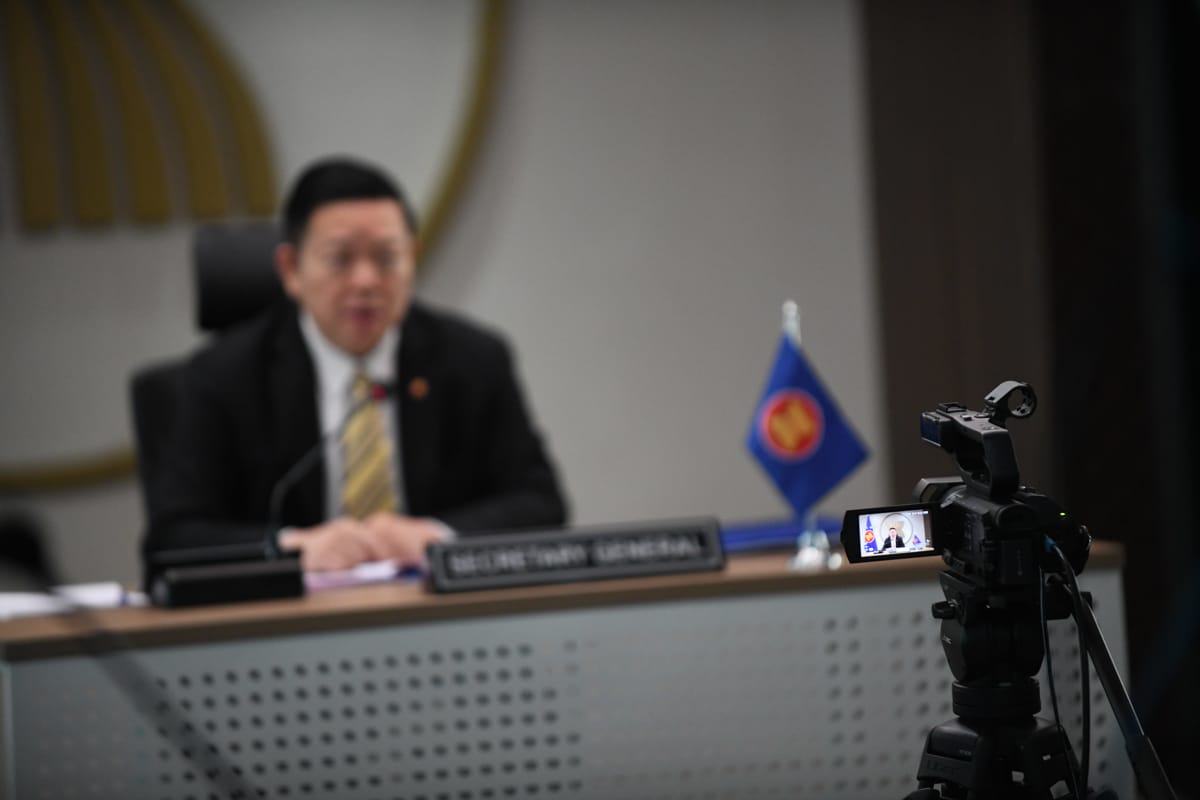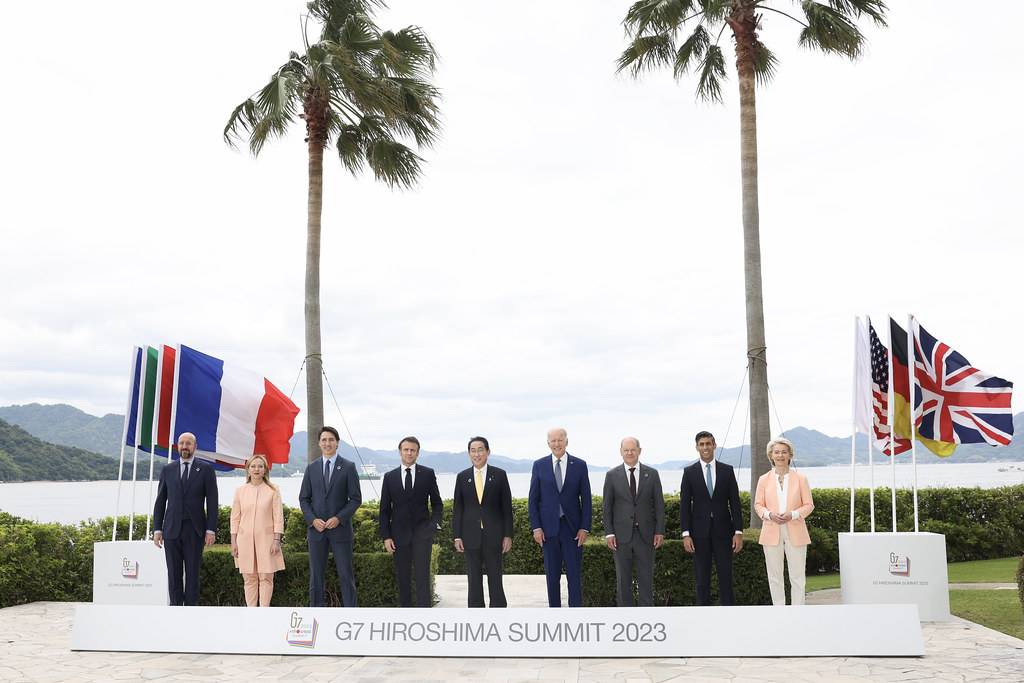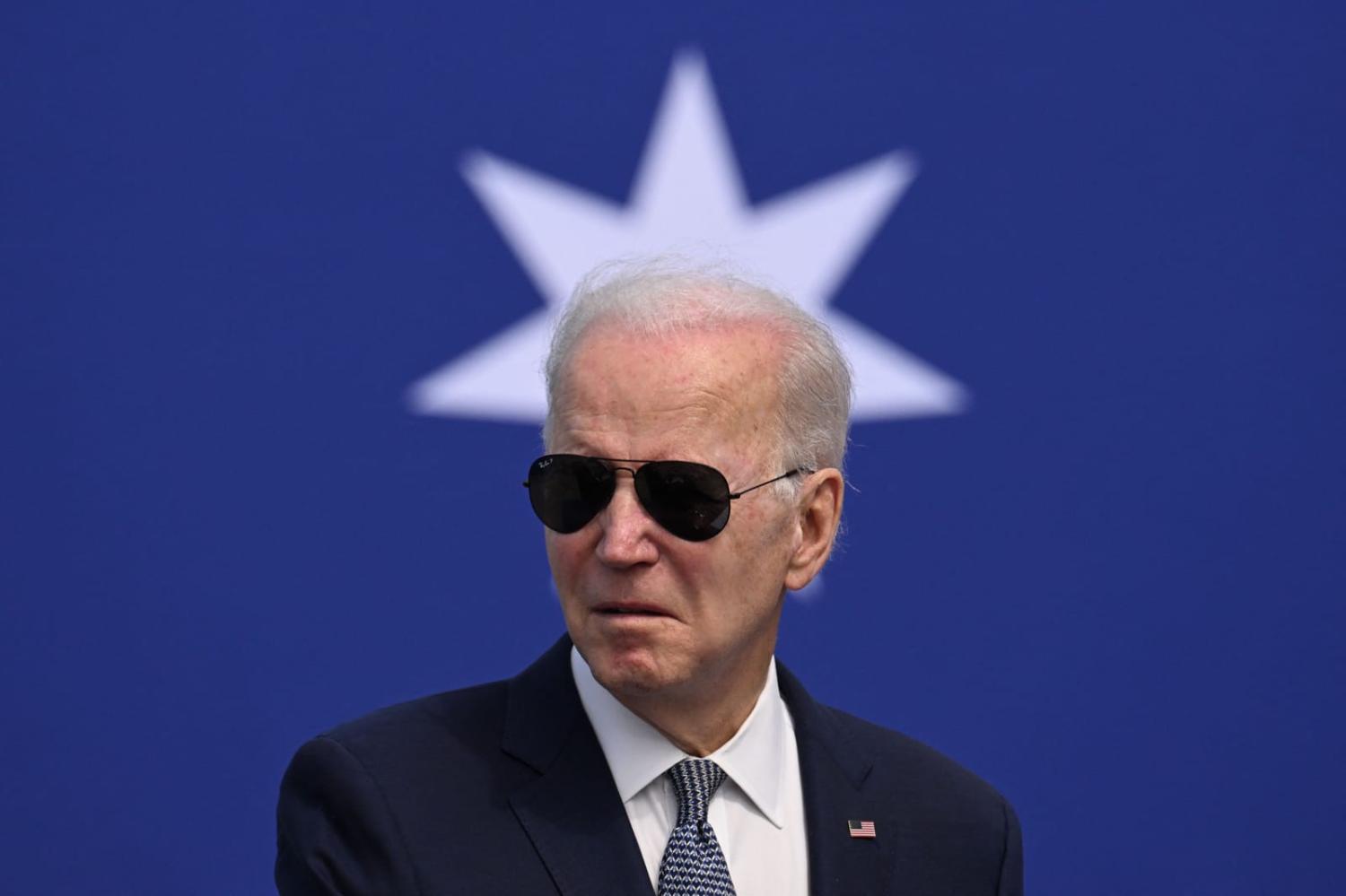Growing pains
For a newish four-member, self-declared nimble group with an aversion for too much bureaucratisation, the Quadrilateral Security Dialogue hit a telling benchmark at the weekend.
The leaders’ meeting statement from the hastily re-arranged Hiroshima mini-summit was substantially longer than the last such statement from the ageing, process bound, 21-member, 29-year-old Asia Pacific Economic Cooperation (APEC) group.
Comparing the size of summit statements is fraught with pitfalls, given the proliferation of appendices these days to obscure the natural prolixity of the participating officials. And then there is the conventional wisdom that the lumbering peak sessions are really all about providing opportunities for snappy sideline bilateral pull-asides.
But officials labour over these texts for weeks and leaders often claim to have slipped something in or out, so they deserve attention. Although, if words are diplomatic bullets, the Quad’s 3000-word effort is still more of a shotgun than the 50-page, 20,000-word bazooka from the G7 leaders, also delivered in Japan.
Even without Australia’s aborted dream of a full Sydney Opera House treatment this year, the Quad’s advocates are increasingly arguing about the pros and cons of middle-aged spread between horizontal (extra members) and vertical (extra sectoral) expansion. And then there is a growing debate about institutionalisation. The Quad is now joining the well-trodden path of adding a parallel business group, just like APEC, the Association of Southeast Asian Nations, and the G20 all did some years ago.
For example, last week at Sydney’s United States Studies Centre Peter Dean argued that the Quad needed institutional architecture as it expands its vertical programs (such as last weekend’s Pacific undersea cable initiative) “to stop things slipping through the cracks”. Meanwhile on an Asia Society Australia webinar amid discussion about the need to actually deliver on promised public goods initiatives, C. Raja Mohan argued that there would be even more initiatives in response to regional country questions about what the group had actually delivered. But rather than take in new members, he says the group will “look to ad hoc groups for expansion on certain issues”.
See no evil
Membership expansion may be a stretch too far for a group trying to find its place in a crowded landscape with ambitious program verticals already in global health, climate, infrastructure, critical and emerging technologies, space, and cybersecurity. But the Quad Leaders’ statement seems more concerned with justifying how it fits into the existing diplomatic architecture without upsetting others, rather than justifying its existence through the actual delivery of programs now focused more on public goods than defence alignment.
And so, it declares almost obsequiously:
Respect for the leadership of regional institutions, including ASEAN, the Pacific Islands Forum (PIF), and the Indian Ocean Rim Association (IORA), is and will remain at the centre of the Quad’s efforts.
This goes on almost interminably to embrace everything from the United Nations Framework Convention on Climate Change to the Sustainable Development Goals (SDG).
This apparent preoccupation with reassuring the incumbent institutions can be better appreciated through the lens of former Indonesia foreign minister Marty Natalegawa declaring that the “recent reinvigoration of the Quad … notwithstanding perfunctory tribute to ASEAN centrality” signals ever-deepening chasms across the region. “Without a renewed and reinvigorated effort by ASEAN to show its mettle,” Natalegawa went on to warn, “the 10-nation South-east Asian grouping faces a possible future of diminishing relevance.”
And so, what does ASEAN have to say about all this? Its recent 10,000 word Chairman’s Statement from the Indonesian-hosted summit two weeks ago is a study in indifference compared with the Quad’s existential angst.
While the Quad leaders reference ASEAN’s Outlook on the Indo-Pacific, its Myanmar Five Point Plan and so on, the ASEAN leaders simply don’t even mention the Quad’s arrival on their turf. The PIF, IORA, and various other regional and global institutions get a mention, and even the date of the ASEAN Summit in Sydney next year is announced (4 March), but there’s no attempt to respond to the Quad diplomacy.
Instead, the region’s oldest security, and increasingly now economic institution, declares bluntly:
ASEAN-led mechanisms continue to be the only inclusive avenue that facilitates constructive dialogue and concrete cooperation, therefore contributing to the development of the region’s comprehensive security architecture.

7+10=20?
It only seems yesterday that former prime minister and sceptic of “negative globalism” Scott Morrison was turning up at G7 summits wearing the putative Democracy Ten team jumper along with the Indian and South Korean leaders.
The G7 club has never quite got over being supplanted by the creation of the G20 leaders forum in response to the 2008 global finance crisis, which partly arose out of the poor management of deregulated financial sector risk by the G7’s economic overlords.
But the Hiroshima summit has really underlined how the G7 is back bigger than ever as an ill-disguised “G20 Lite” now that the idea of the G20 as the boardroom for a multipolar world has lost its way with intransigent or basket case members ranging from Russia to Argentina.
Obama administration senior official and now Biden administration Japan ambassador Rahm Emanuel made this clear ahead of the Hiroshima gathering by declaring that the G7 was picking up the pieces from a dysfunctional United Nations and G20. He said the assembly of countries invited by Japan ranging from Cook Islands and Comoros to Vietnam and Brazil to the three earlier “D10” recruits (Australia, South Korea and India), meant the old rich country club was at a new “inflection point”. The G20 was simply “an outgrowth when the G7 was struggling”.
Indeed, the G7’s own attempt to turn 20,000 words into a digestible set of bullet points only underlines how it seems to be eating the G20’s lunch. Summarised even more, it covered supporting Ukraine, strengthening disarmament, coordinating economic resilience through de-risking, driving clean energy transition, food security, quality global infrastructure, opposing Indo-Pacific coercion, global economic recovery, accelerating the SDGs, evolving multilateral development banks, stronger partnerships with Africa, preserving the planet, and climate cooperation.
And in a telling indication of where this institutional rivalry is going, all that required twice as many words in the communique than the last G20 Summit in Indonesia where President Joko Widodo actually proved surprisingly adept at steering the group through the shoals of the Ukraine conflict.

Derisking summiteering
Brendan Taylor has already asked the salient question here at the The Interpreter about countries behaving like teenagers creating fresh chat groups for every new party: “How much is too much?”
And the Perth US Asia Centre has gone where communique writers struggle to go and made some interesting actual choices about where Australia might rationalise its summit participation.
The G7’s attempt to embrace virtually every hot issue in the world raises two questions. One: what are the real priorities for this year and the serious deliverables? Two: What are the non-members and invitees doing in response to being left out of the party?
The first will be decided as diplomats try to turn words into actions. And China provided one small example of the second by firming up its ties in central Asia before G7 met and will presumably do more at the forthcoming BRICs (Brazil, Russia, India, China and South Africa) summit, which is touting new membership.
The Quad faces its own narrower version of these same two questions as it increases its own remit, certainly vertically – although its members (especially G20 Chair country and BRICS member India) seem more attuned to the challenges of scattergun expansion in this case.
So, the embrace of the more conservative term “de-risking” as opposed to the more aggressive “decoupling” at the G7 gathering in de-facto reference to China may hint at some reservation about abandoning the idea of a broader G20 type institution as the most appropriate way to manage a multipolar world.

